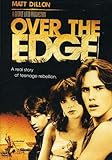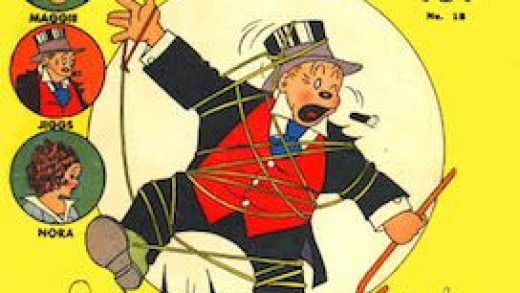In fiction, film, and real life, it has become comforting and convenient for us to stereotype the suburbs. Suburbia, so it goes, is a façade; a place where secrets lurk like grubs beneath well-manicured lawns. Jason Diamond’s excellent new book The Sprawl: Reconsidering the Weird American Suburbs reveals the truth is far more complicated.
Diamond’s omnivorous and expansive sense allows him to weave history, popular culture, literature, film, and his own experiences into a revelatory take on suburban life. “The suburbs aren’t one thing or another,” Diamond writes. “[W]e try to pigeonhole suburbia, act like it’s a great big boring monolith of conformity and tract housing, but there’s so much more to it than that, and we need to understand it better.”
The Sprawl enables such new understanding. Diamond’s first book was Searching for John Hughes. The features editor for InsideHook, he has written for The New York Times, Esquire, The Paris Review, New Republic, Pitchfork, Harper’s Bazaar, Rolling Stone, Eater, and elsewhere.
We spoke about the bucolic melancholy of the suburbs, the perfect movie to capture the feeling of suburbia, and how suburban life is used for political rhetoric.
The Millions: Your preface begins with an affirmation—“I’m suburban. I’m of the suburbs”—and a confession that it took you a long time to admit your appreciation for the small touches of suburbia: freshly cut grass, shopping malls, and “grilling meat on a Weber grill I spent an hour trying to light.” What causes people to hesitate voicing—or even accepting—their affinity for the suburbs?
Jason Diamond: I can only speculate as to people’s reasons, but I’d wager it’s why some people tell you they’re from New York when they’re from Long Island, or they’re from Los Angeles, but don’t specify which part. We don’t have a lot of overt pride in suburban places. The suburbs are just there, defined by what they’re not. Many of these places aren’t built to stand out—they’re just places to live and, for some, to leave. One of the things that I felt more clearly as I did my research is what links one suburb to the next is the feeling of an absent builder. Someone made this place, sold the homes, and moved on. They aren’t structured to cultivate community. Lawns are a far way off from shared green spaces. For people that grew up in cities or in rural areas where community is important, I’m sure that seems really off. For people who grew up in suburbs, that lack of community becomes that feeling of being disconnected, bored, and that there’s nothing to do in your hometown except maybe hang out in the Chili’s parking lot. People aren’t really happy with this explanation. But our individual experience of alienation in suburbia informs our entire idea of what “the suburbs” are, and I don’t think people like me, who left the suburbs, want to revisit that feeling. Which, again, fair. But not every suburban place is the same.
 TM: You note how the suburbs “have taken on the status of cultural oddity,” and include some salient examples: The Twilight Zone, the fiction of Shirley Jackson and John Cheever, Arcade Fire’s The Suburbs, all works that I teach as examples of suburban literature—to a classroom full of suburban teenagers. I’m especially interested in Cheever’s “The Swimmer,” an iconic tale from 1964 that remains so accurate to a certain sliver of suburban life. You write that his mixture of realism and surrealist scenes show “that no matter what we do, no matter how much we make, how happy we pretend to be, or how far we’re willing to journey, our demons catch up to us.” Why are these ideas especially relevant to the world of the suburbs?
TM: You note how the suburbs “have taken on the status of cultural oddity,” and include some salient examples: The Twilight Zone, the fiction of Shirley Jackson and John Cheever, Arcade Fire’s The Suburbs, all works that I teach as examples of suburban literature—to a classroom full of suburban teenagers. I’m especially interested in Cheever’s “The Swimmer,” an iconic tale from 1964 that remains so accurate to a certain sliver of suburban life. You write that his mixture of realism and surrealist scenes show “that no matter what we do, no matter how much we make, how happy we pretend to be, or how far we’re willing to journey, our demons catch up to us.” Why are these ideas especially relevant to the world of the suburbs?
JD: I think Cheever really did a fantastic job of summing up what is dark and odd and messed up about the suburbs, and I think the suburbs do a fantastic job of summing up what is wrong with America in many ways, which is why artists keep going back to these places for inspiration. America has lied to itself for its entire existence. It is a place that has tried to run from its demons, all of the terrible, horrific things it’s done, and hopes that it will all just go away. For too long, America pretended that centuries of racism and violence was in the past, and nothing more. But I believe that the suburbs have really come to symbolize the pathology of “American exceptionalism,” that things aren’t as great as we want to make it out to be, and we don’t want to look under the carpet, so to speak. We don’t want to face these things. Suburbia is a really obvious metaphor. We just hope we’ll be protected by the walls we put up around us. I can read “The Swimmer” today and, sure, it’s still at its heart about a sad, middle-aged man who has lost it all, who cheated on his wife, whose kids probably hate him, and whatever other sins Neddy finally has to face at the haunting end of the story—but I can also look at it as a metaphor for America. That we go through this journey, blind to everything that’s going on around us, and then suddenly we come to a spot where we can’t keep moving. We reach the end and what do we get? A big empty house we’re locked out of. America, especially these days, often feels like it’s at the end of something, just standing outside of some big, empty house that we can’t get into. We tried to hide from all of our past transgressions, and now we’re Neddy Merrill.
The good news is that I think things can change. At least, I hope they will.
 TM: Your description of a scene from Back to the Future when Marty McFly is at home in Lyon Estates is spot-on: “It’s lonely; something you realize after you’ve watched enough movies and TV shows about the suburbs is that they’re often shot that way.” You share a number of films that dramatize suburbia in all of its permutations. I know it’s a difficult task, but if you had to choose one as The Movie of the Suburbs, what would it be, and why?
TM: Your description of a scene from Back to the Future when Marty McFly is at home in Lyon Estates is spot-on: “It’s lonely; something you realize after you’ve watched enough movies and TV shows about the suburbs is that they’re often shot that way.” You share a number of films that dramatize suburbia in all of its permutations. I know it’s a difficult task, but if you had to choose one as The Movie of the Suburbs, what would it be, and why?

 JD: That’s a tough one. Part of me would say Blue Velvet, because it’s a masterpiece, but it also starts out looking at what I talked about in my last answer: what’s underneath. That part where we see all these symbols of a certain type of suburban ideal, then it descends, literally, to the ground beneath the trimmed grass. But I’m actually going to go with the film Over the Edge. It’s obviously dramatized in that really gritty, almost silly late-1970s, early-’80s way, but it also really captures perfectly how alienating and mind-numbing places can be, and how often we really do just build places because we claim the space and then throw them away.
JD: That’s a tough one. Part of me would say Blue Velvet, because it’s a masterpiece, but it also starts out looking at what I talked about in my last answer: what’s underneath. That part where we see all these symbols of a certain type of suburban ideal, then it descends, literally, to the ground beneath the trimmed grass. But I’m actually going to go with the film Over the Edge. It’s obviously dramatized in that really gritty, almost silly late-1970s, early-’80s way, but it also really captures perfectly how alienating and mind-numbing places can be, and how often we really do just build places because we claim the space and then throw them away.
TM: In the chapter titled “Monsters, Mad Men, and the Mundane,” you write “The truth is that, often, people from the suburbs create the things they’re most afraid of from their anxiety and angst.” You describe the wild Satanic Panic of the ’80s, which often spiked in suburban areas, and I can’t help but think of our shared appreciation for Unsolved Mysteries, a show that I watched while in the suburbs, and which often depicted strange things happening in those suburbs. How does the suburb, a place with “a structured and structuring way of being,” affect our sense of imagination?
JD: Growing up in the suburbs, to me, felt like a challenge to either be one way or another. To accept the way things seemed or to investigate, to push further, to engage a natural curiosity. A lot of suburban places offer wide open spaces, but these places also get filled up with a lot of unnecessary, unnatural filler: parking lots, box stores, office space they’re never going to fill up. I was really fascinated by what Rem Koolhaas calls “Junkspace.” He points out “the sum total of our current achievement; we have built more than all previous generations together, but somehow we do not register on the same scales,” and I think that could be applied to so much of what we see in suburbia. And when I talk to people in the suburbs, and from the suburbs, they generally just have overwhelmingly negative things to say. How could we have created so much shit, and have all of it be so empty? The best answer, then, would have to be that actually there was another reality behind the one that we were seeing. It feels like, if you were like me growing up in the suburbs, the only plausible explanation was for there to be some ghost world beneath the one we were seeing. It couldn’t possibly just be subdivisions all the way down. I don’t think people from the suburbs are any more or less creative than people from anywhere else, but I definitely felt like I had a heightened sense of otherworldliness because this world was just so stupid. You have to make things up and that’s how you get by. Imagination in the suburbs isn’t a survival instinct, but it’s close.
TM: “It’s important that the suburbs, which have long been connected to whiteness and to keeping certain people out, are shown as places where anybody can and does live.” I read that great line of yours the same day that Donald Trump tweeted an article from The New York Post, writing “The Suburban Housewives of America must read this article. Biden will destroy your neighborhood and your American Dream. I will preserve it, and make it even better!” How—and why—are the suburbs such fodder for politics and polemics?
JD: Beyond their outsized symbolic power—truly just titanic rhetorical asteroids—there are good reasons for why the suburbs have these stereotypes attached to them. The suburbs were largely white for most of their history. There is no denying that they were white on purpose. From handshake deals to redlining that kept people of color, immigrants, and Jews from owning a slice of the “American Dream,” there are structural ways the suburbs have been entwined with whiteness. So they mean whiteness to him, because he’s a literal thinker. And because he doesn’t know or doesn’t care that the suburbs have demographically changed, you could see why he thinks there is a certain kind of voter in the suburbs who will be attracted to fear-mongering like this. But the suburbs just aren’t demographically as white anymore. The suburbs have changed racially and economically. These places aren’t perfect, but they have changed, and I think that’s good for the country.
As to why politicians love the suburbs, I think it is a holdover from a different time when you could more easily stereotype suburban voters. They’re “soccer moms” or “commuters” who work in the city, but like in Westchester or something out of Mad Men. And while there are definitely still parents who drive their kids to soccer practice in an SUV, I think politicians and pundits really believe it is that simple: That people are simple, that the suburbs are simple. And maybe it was simple 30 years ago when you knew you were aiming for the hearts and minds of mostly white, middle-class types, that you could put a pin down on a map in any suburb and know what kind of person lived there. But I don’t think it’s that way anymore. I think people in the suburbs are far more complex and diverse, and some politicians get it and others don’t.
Bonus Links:
—Returning to My People: Reading Tayeb Salih in the Suburbs
—Zone of Strangeness: On John Cheever’s Subjective Suburbs
—Something Sinister on the North Shore
—A Year in Reading: Jason Diamond
The post Rethinking Suburbia: The Millions Interviews Jason Diamond appeared first on The Millions.
Source : Rethinking Suburbia: The Millions Interviews Jason Diamond










